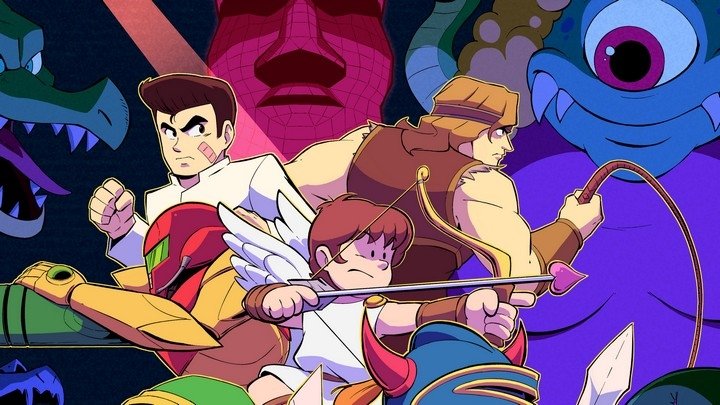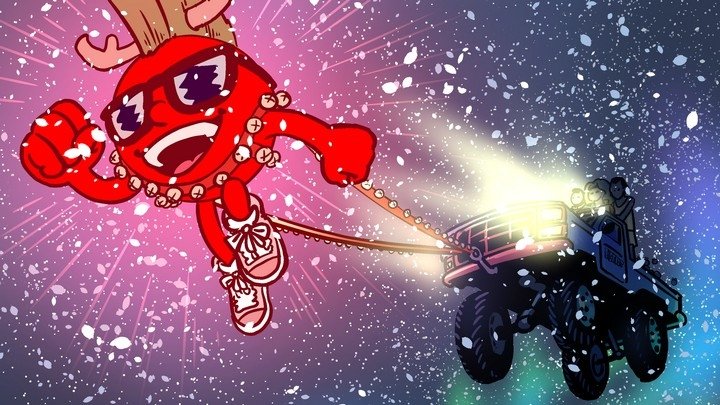Crash Bandicoot 4: It's a bad time
The Nintendo Switch gets 4 on the flaw
I don’t like to be negative, Nauties. In fact, I’d go so far as to argue that games writers in general don’t particularly enjoy it. There’s a fleeting glee in pouring venom on something, but ultimately it’s just a hollow, saddening thing. And here’s the problem; I don’t like Crash Bandicoot 4: It’s About Time. I’ve tried. I’ve played the demo on PS4, the full game on Xbox Series X and – because I have to try all possible angles of attack when it comes to a game I don’t like – I’ve picked it up for the Switch and been playing it in handheld mode.
For a game that positions itself as the new successor to the PlayStation classic Crash Bandicoot 3: Warped, it takes one hell of a lot of liberties in the name of, ostensibly, evolving the gameplay. It’s at this point that I’m going to pick some damn nits, but I promise I’ll come back later to explain all the things I do like about Crash 4. Because there are some. Honest. For now though, I’m afraid it’s going to be a bit of a downer.
See, here’s the thing – the point of the Crash Bandicoot series used to be in getting 100% completion. People have told me that’s not true and that I shouldn’t harshly criticise a game based on optional content, but that’s nonsense. Yes, you can play through the game ignoring the boxes, not looking for hidden gems, etc, but the argument doesn’t ring true when Crash 4 frontloads that stuff way more than the original trilogy.
Which leads to my first major point of contention – they somehow made Gems both incredibly prominent and utterly disposable at the same time. In the most complex level of Crash Bandicoot 2, say, you can get a maximum of two Clear Gems – one for breaking all the boxes and one for taking a secret hidden path. There aren’t that many of them, and getting them feels like an achievement. Here, every level ends with a full-screen display of six such Gems – three for getting certain amounts of Wumpa Fruit, one for breaking every box, one for clearing the stage without dying more than thrice, and a last one hidden somewhere in the level. Getting three Gems for fruit seems like a gimme, but they don’t do anything unless you have a complete set. Get all six and you get a new skin for Crash and Coco. This means you’ve got to bang your head against a particular level pretty darn frequently if you want a particular look, and the way the boxes are placed in Crash 4 can make this a lot easier said than done.

See, getting to the end of a Crash 2 or Crash 3 level and finding you’ve broken up 47 out of 48 boxes? Yes, it’s a little irritating, but the levels are pretty short, too. Getting back where you need to be isn’t going to take you a long time. You’ll probably have a pretty good idea where the boxes you missed are, as well – the game’s visual hints of Gem Paths and Death Routes make it fairly transparent. Crash 4? You’ll struggle through fourteen minutes of painfully difficult platforming, breaking every single box in sight – even doubling back on yourself and sacrificing lives when you miss the stupid trial-and-error boxes on the crappy grind rails – and find yourself with 151 out of 152 at the very end. And that sucks. Is it your fault for missing them? Sure, of course it is, but when boxes are routinely tucked behind scenery, or positioned at the very peak of jumps to the point that you can’t even see them, one feels a little less inclined to take it on the chin.
Did I say six Gems per stage? My mistake. It’s actually twelve. The N.Verted stages present you with the same levels that you’ve already done but with six more Gems to collect in much the same ways. Not to mention the truly silly visual gimmicks that have been foisted on this extremely blatant padding – does replaying the same exact level through a bizarre, pulsing sonar effect sound fun to you?
I’m doing what I said I wouldn’t and I’m just being snide at this point, but it’s only because I was looking forward to this one so much. It’s so disappointing that Crash 4 turned out to be such a bloated mess in the name of “added value”. Here’s another example - there are Flashback Tapes hidden in most levels which unlock extra stages which seem to be based entirely around bouncing on boxes, an activity that the developer may have overestimated the fun factor of. The kicker is that getting said Tapes requires the player to reach them without dying. A tall order on many stages, but fine. Once you’ve got the tape, however, you must finish the stage to “lock it in”. You can’t exit to the map as you’ll lose the Tape. Why? I, as the player, have proven that I can meet the challenge requested of me. I got to the Tape without dying. What does it actually mean to then have to clear the remainder of the long, difficult stage which I’ve almost certainly already done?
It’s emblematic of a game that reaches way, way too far and is entirely too eager to please, all to its own detriment. It’s a fundamental misunderstanding of Crash Bandicoot. I mean, that game was hard, right? No, it wasn’t! It never was! Parts of the games were tricky, yes, but even the absolute most egregious challenge in Crash 2 (getting the Box Gem in “Cold Hard Crash”, by my reckoning) is an order of magnitude easier than doing the same in basically every stage after the second one in Crash 4.

And I can live with hard games, my friends. I’ve played and beaten and enjoyed many very difficult titles. But what I’d like is some consistency, especially in a numbered sequel. The game can’t even decide if it’s hard or not – the stages can be nightmarish, but bosses have checkpoints after every hit. The bosses aren’t even that difficult!
This kind of cruelty feels to me like a consequence of giving the player (optional) infinite lives. No real fail state means you’ve got to introduce some measure of challenge, so the road to 100% completion had to be exponentially ramped up. Don’t get me wrong, I can see the love that went into this game. The designer who hid a nearly-invisible box in the inky blackness of a bottomless pit was probably absolutely delighted with their little trick. This isn’t me calling the design lazy – far from it! But it’s a different kind of design to what I expected from a numbered Crash sequel – the wrong kind.
I promised I’d come back and praise what I like about Crash 4, so here I am fulfilling that obligation. But, truthfully, there is a lot that I appreciate. The port to Switch is pretty much sublime – yes, the framerate has been halved to 30fps but that’s how the PlayStation games were so it actually feels more familiar to me. It’s also generally more appealing to play a game like this on a handheld, and the ability to simply suspend the game at any time helps reduce frustration with its more baffling, irritating quirks – like the Bonus Rooms having been changed to difficult puzzles that are incredibly easy to render unwinnable when they’re supposed to be BONUS ROOMS. Ahem, sorry.
There’s no denying that Crash 4 is an accomplished and well-made game, with plenty of content even if you ignore the stupid longeurs and an admirable refusal to simply ape the past titles in the series ala Wrath of Cortex. It doesn’t come together for me due to its incredibly demanding completion requirements flying in the face of the breezy fun that characterised the PS1 games, but if you’re prepared to put that aspect aside there’s definitely enjoyment to be had.
This is very backhanded, but it’s basically Crash for people who don’t like Crash. Which feels weird to say, because the developers clearly did like Crash! But I wanted a new Crash that feels like Crash. Not this masochistic hate-grind replete with utterly misguided attempts at “extra content”.
Lord, I didn’t even mention the awful segments where you play as Dr Cortex. Or the stupid mask that lets you turn platforms on and off, which is never fun. Or the (Snip! –Ed)




